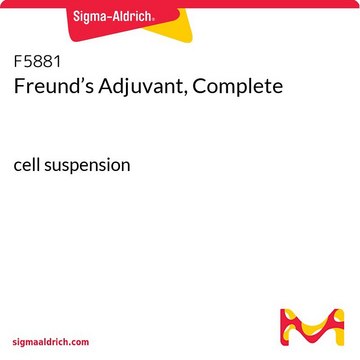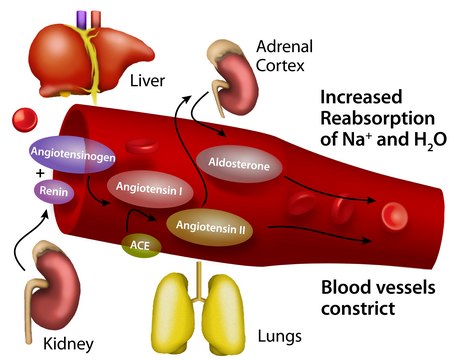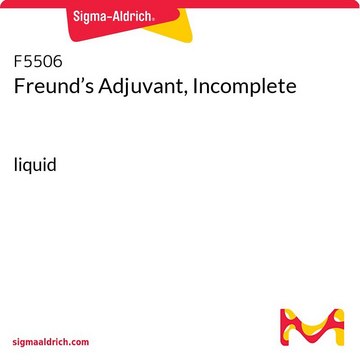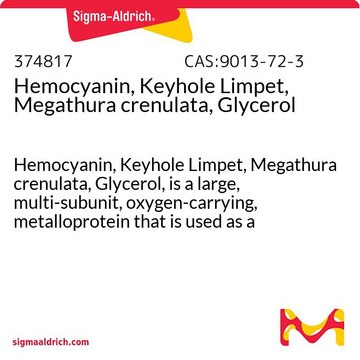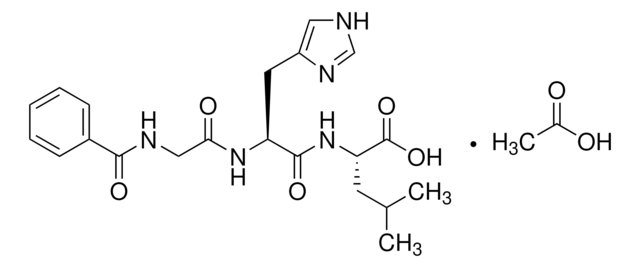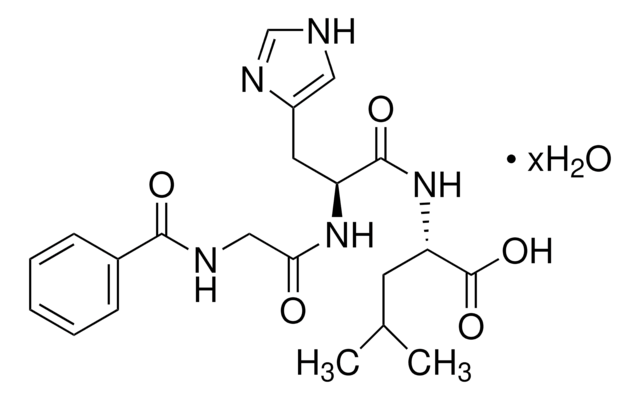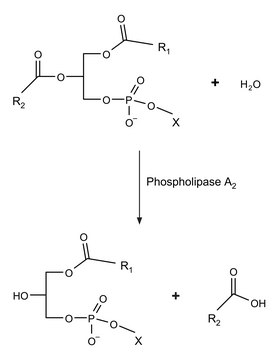H7017
Hemocyanin from Megathura crenulata (keyhole limpet)
Synonym(s):
KLH, Keyhole limpet hemocyanin
Sign Into View Organizational & Contract Pricing
All Photos(1)
About This Item
Recommended Products
biological source
Megathura crenulata
Quality Level
form
powder
packaging
vial of KLH (KLH is present by weight at approximately 1 part KLH to 5 parts total solid.)
technique(s)
ELISA: suitable
solubility
H2O: soluble
storage temp.
2-8°C
Looking for similar products? Visit Product Comparison Guide
Related Categories
General description
Gastropod hemocyanins are massive glycoproteins (4 to 8 MDa) designed by an intricate arrangement of 10 subunits that are self-assembled into hollow cylinders 35 nm in diameter.
Hemocyanin is a high molecular weight copper containing glycoprotein. It reversibly binds oxygen and forms the extra-cellular respiratory protein of mollusks. Keyhole limpet hemocyanin (KLH) is filtered from the hemolymph of Megathura crenulata, also called the giant keyhole limpet. It is native to the southern California coast and Mexico.
Application
Keyhole limpet hemocyanin (KLH) is a strong and well known immune-stimulant in both experimental animals and humans. It has been used as a hapten carrier protein to enhance antigen-specific T cell priming and is known to stimulate a CD4+ T-cell response. Hemocyanins stimulate Th1 reactions without known side effects, which make them ideal for long-term continuous treatment of cancer.
Physical form
Lyophilized with stabilizing buffer
Reconstitution
Reconstitute with deionized water to a KLH concentration of 10 mg/mL, to yield an opalescent solution in 31 mM sodium phosphate buffer, pH 7.4, containing 0.46 M NaCl, 2% PVP and 41 mM sucrose.
Reconstituted protein solution may be stored up to 2 months at −20 °C.
Reconstituted protein solution may be stored up to 2 months at −20 °C.
Storage Class Code
10 - Combustible liquids
WGK
WGK 3
Flash Point(F)
Not applicable
Flash Point(C)
Not applicable
Personal Protective Equipment
dust mask type N95 (US), Eyeshields, Gloves
Choose from one of the most recent versions:
Certificates of Analysis (COA)
Lot/Batch Number
Don't see the Right Version?
If you require a particular version, you can look up a specific certificate by the Lot or Batch number.
Already Own This Product?
Find documentation for the products that you have recently purchased in the Document Library.
J T Brisbin et al.
Poultry science, 87(10), 1995-1999 (2008-09-24)
Subtherapeutic and prophylactic doses of virginiamycin are capable of altering the intestinal microbiota as well as increasing several growth parameters in chickens. In spite of the fact that the microbiota plays a role in shaping the host's immune system, little
Robert J Huber et al.
Histochemistry and cell biology, 136(2), 177-189 (2011-07-19)
The Dictyostelium discoideum homolog of mammalian cyclin dependent kinase 5 (Cdk5) has previously been shown to be required for optimal growth and differentiation in this model organism, however, the subcellular localization of the protein has not previously been studied. In
Chloe C Josefson et al.
Integrative and comparative biology, 60(3), 732-741 (2020-08-21)
One of the key foci of ecoimmunology is understanding the physiological interactions between reproduction and immune defense. To assess an immune challenge, investigators typically measure an immune response at a predetermined time point that was selected to represent a peak
Xiujuan Zhou et al.
Fish & shellfish immunology, 93, 641-651 (2019-07-26)
Interleukin-2 receptor subunit beta of flounder (Paralichthys olivace, fIL-2Rβ) was annotated on the NCBI, its gene was cloned and characterized functionally in this study. And then the amino acids sequences and tertiary structure of fIL-2Rβ were analyzed, respectively. RT-PCR and
Tingting Chen et al.
Cancer biology & medicine, 17(1), 132-141 (2020-04-17)
Objective: Cancer stem cell is one of the important causes of tumorigenesis as well as a drug target in the treatment of malignant tumor. However, at present, there is no immune vaccine targeting these cells. Octamer-binding transcription factor 4 (OCT4)
Our team of scientists has experience in all areas of research including Life Science, Material Science, Chemical Synthesis, Chromatography, Analytical and many others.
Contact Technical Service

